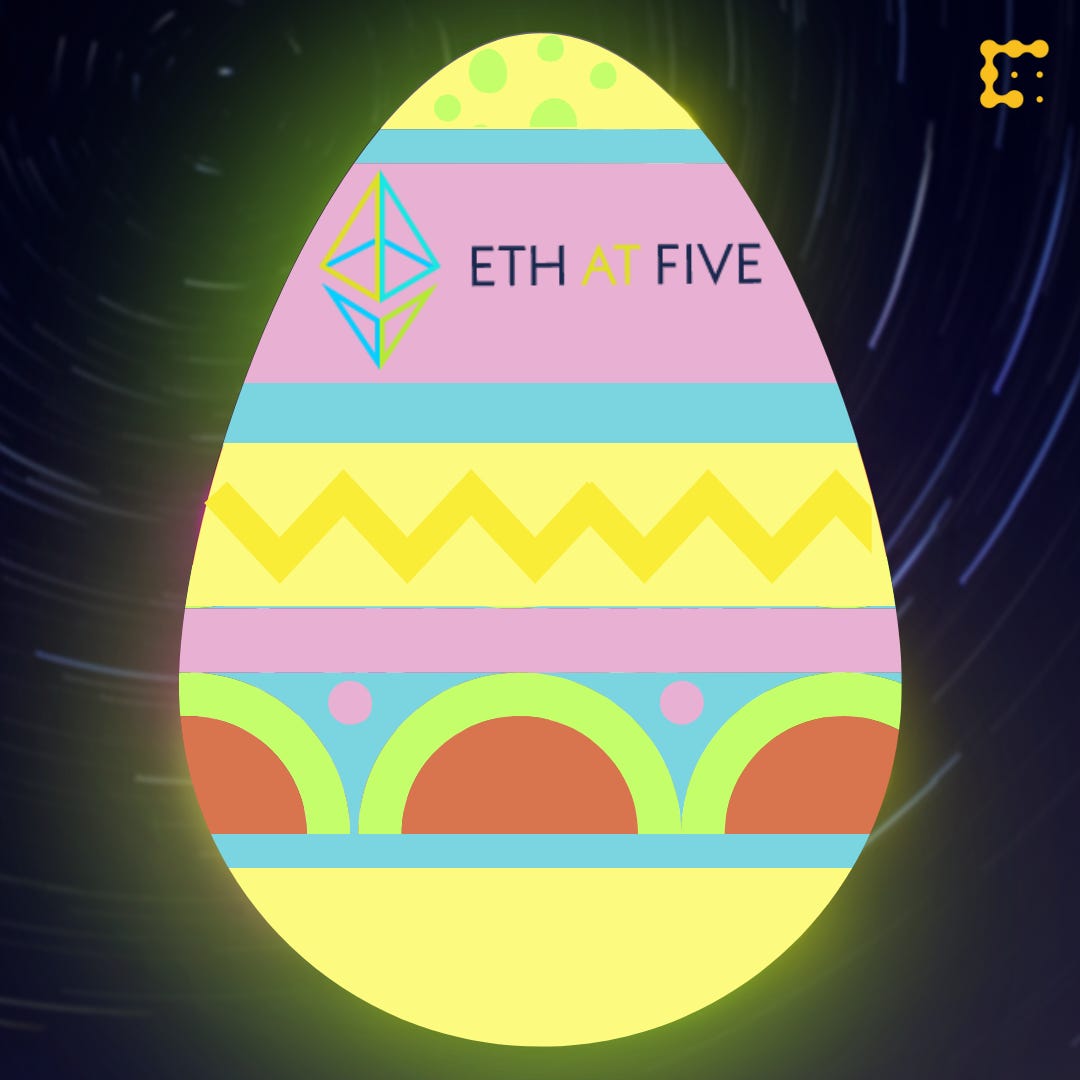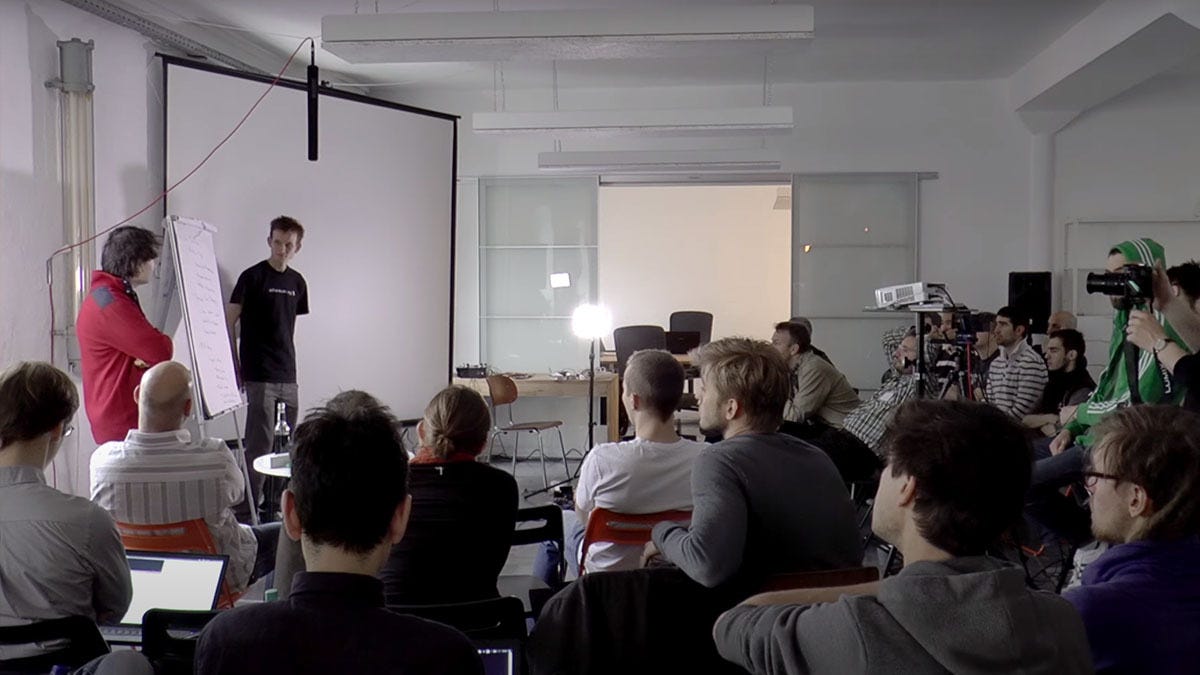
Five years ago yesterday, the Ethereum blockchain went live on mainnet.
“Ethereum Launches Long-Awaited Decentralized App Network” was the CoinDesk headline on July 30, 2015, appearing above a piece that was equal parts credulous and cautious.
“Grand in scale and flexible by design, it aims to decentralise pretty much anything on the Internet,” we wrote.
Five years later and the internet is still helmed by Web2 titans, but that’s not to say Ethereum hasn’t come a long way from its humble (albeit well-financed) beginnings.





Of its decentralize all the things mandate, fundraising and finance have been Ethereum’s successes. Recall, this was the blockchain that launched a thousand token sales, starting with Augur in late 2015.
More recently, decentralized finance (DeFi) has been Ethereum’s raison d'être. Savvy crypto users have dumped a whopping $3.9 billion into the Makers, Compounds and Aaves of the world, looking for yield and new ways to pull money from the, uhm, ether. Using crypto to make money without having to spend it appears to have been DeFi’s killer innovation.
But, with all due respect to the yield farmers tilling strange new fields, at the five-year mark, it’s worth recalling Ethereum’s expansive view of what technology can accomplish.

“Ethereum is open-ended by design,” Vitalik wrote in the 2013 white paper, “and we believe that it is extremely well-suited to serving as a foundational layer for a very large number of both financial and non-financial protocols in the years to come.”
The years have come, and blockchain remains a niche thing touched by the relatively few. As Ethereum approaches the first phase of its Eth 2.0 overhaul later this year, though, there is an opportunity to change that. The tent can widen, and the ballyhooed talk of financial inclusion, an end to extractive middlemen and a new template for shared decision-making could finally come true.
Our 2015 article gave Emin Gün Sirer the last word: “I believe in this case the hype and the fantasy-borne use cases overstep the capabilities of the platform.”
What the kicker will be in 2025 is anyone’s guess.
Zack Seward, Managing Editor, CoinDesk

Today on CoinDesk Live
Inside the Hype Machine: Behind the Scenes of the ICO Boom – Friday, July 31, 4 p.m. ET
Speakers: Christie Harkin, Brad Laurie, Hartej Sawhney, David Wachsman
Smart-contract auditors, PR pros, YouTube influencers: Meet the service class that was caught up in 2017’s ICO gold rush, selling metaphorical shovels to prospectors seeking billions in instant riches. We relive the good, the bad and the ugly of that era through their eyes.
Join our Discord community to chat during CoinDesk Live.

Cover Story: Ethereum's 5-Year Journey to 2.0
By Will Foxley
“Though now evolved in many ways,” Gavin Wood wrote in Ethereum’s 2015 yellow paper, “the key functionality of a blockchain with a Turing-complete language and an effectively unlimited inter-transaction storage capability remains unchanged.”
Five years and thousands of bits later, Ethereum is still chugging along as a decentralized platform for self-executing code.
And it has “evolved in many ways,” with the largest yet to come: Ethereum 2.0.
Call it Slasher or Casper, Shasper or Serenity, Eth 2.0 has had as nearly many names as unrealized goals. For all the hubbub, a physical implementation is knocking on the cryptocurrency gates and is set to debut (by most estimates) this fall.
🌈 Congrats! You found the Easter egg in our series. Click here to see it.

Ethereal Bestiary

By Doreen Wang
Meet Leslie the Rhino, the Eth2 Validator Launchpad mascot named after American computer scientist Leslie Lamport.
Eth2 Validator Launchpad is an onboarding program for aspiring validators, who will serve as the Ethereum 2.0 chain’s equivalent of miners. The program guides them through the process of generating key pairs and staking 32 ETH, the minimum amount needed to become a validator, into the official Ethereum 2.0 deposit contract.
Lamport, the mascot’s namesake, is known for his work in distributed computing systems, where several autonomous computers communicate with each other by passing messages. The rhino symbolizes strength, grounding and a broader sense of perception.

CoinDesk Live Recap: Co-Founders Revisit Ethereum’s Launch Drama
By Leigh Cuen
Several Ethereum co-founders view the project as a wild success and some are even more bullish now than they were back in 2015, when the cryptocurrency project first launched.
“We brought in an HR person to start building up the team, I brought in my lawyer to be the first lawyer on the project. It was a risk,” said Ethereum co-founder Anthony Di Iorio, one of the first people to see Vitalik Buterin’s original Ethereum white paper.
Back in 2014, no one knew what to expect from a token sale that promised to kickstart a whole new type of cryptocurrency, something that would become more than digital money. In the early days, before fundraising with tokens became normalized, the experiment seemed unlikely to pay off. It was a longshot at best. But early investor Ken Seiff of Blockchange Ventures said for him, it was all about the founding team.
Seiff and Di Iorio were joined by The Defiant newsletter founder Camila Russo, fellow Ethereum co-founder Anthony D’Onofrio and CoinDesk podcast producer Adam Levine to talk about the early days of “the world computer.”



Blast From the Past
By Christie Harkin
The first, bare-bones Devcon 0 was held in Berlin in November 2014 with about 50 devs in attendance. Here, Vlad Zamfir and Vitalik Buterin hold an old-school posterboard presentation to discuss Ethereum 1.x – on blockchain interoperability and scaling.


Ethereum’s Journey to Eth 2.0

On July 30, 2015, Ethereum was born as the first general-purpose blockchain platform with a culture of hyper-positive rainbows and unicorns as symbols of inclusiveness, zaniness and nonconformity. It paved the way for a whole new use case for blockchain technology beyond bitcoin's use as cryptocurrency or electronic cash.
But the road to development has been filled with stops and starts. For the fifth anniversary of Ethereum’s mainnet launch, we retell the story of its formative journey toward Ethereum 2.0.

Ethereum History in 5 Charts

Part 5: The Long Road to 2.0
By Christine Kim and Shuai Hao
Ethereum hasn’t fulfilled its vision yet.
Developers are convinced that the current blockchain infrastructure is wholly inadequate to handle an influx of millions, if not, billions of users around the world. This was always the suspicion of the early founders of Ethereum such as Vitalik Buterin. Five years after releasing their creation into the wild, Buterin and others have worked out a roadmap called “Ethereum 2.0” to bring Ethereum’s development to completion and it is anticipated to launch sometime this year or early next.
The Ethereum 2.0 roadmap is almost as ambitious as the original one which brought the first dapps into existence. While the launch of this technology is forthcoming, an important part of understanding Ethereum’s five-year history lies in studying the many iterations that Ethereum 2.0 underwent in its years of planning.
Originally, Ethereum 2.0 in 2015 was thought of as the final development phase for the project and dubbed “Serenity.” Serenity was tentatively expected to be rolled out 16 months after initial mainnet launch (which would have been November 2016). The upgrade would transition Ethereum from its reliance on a computationally intensive process for block production inherited from Bitcoin, known as “mining,” to a more energy-efficient process of validating.
To this end, developers created what is called the “difficulty bomb” to slowly but surely encourage this transition away from mining. The bomb, which was activated on March 14, 2016, increases the difficulty levels for miners to find an Ethereum block over time. This schedule at which this bomb slows block production has been delayed three times over the course of the last five years as developers re-worked plans for launching Ethereum 2.0.
The most recent delay to the difficulty bomb occurred on Jan. 2, 2020. This may be the last time the difficulty bomb is pushed back as tentative estimations by some developers suggest the transition to Ethereum 2.0 could begin officially sometime this year and replace the existing network by late next year.
While there is no telling what new technologies and standards of blockchain practice will be innovated as a result of Ethereum 2.0, looking back at the first five years of the network’s development does give some indication. In that time, Ethereum has undergone network-splitting upgrades, faced crippling technology bottlenecks, advanced new forms of fundraising for crypto projects and formalized a launch plan for migrating to Ethereum 2.0.


Did you enjoy this email?
Well, we did.
This newsletter was brought to you by CoinDesk editors Christie Harkin, Marc Hochstein, Elaine Ramirez and Zack Seward.
Try out Blockchain Bites, Money Reimagined, Crypto Long & Short and First Mover to stay tuned all year.
Get in touch at social@coindesk.com or share with a friend:


